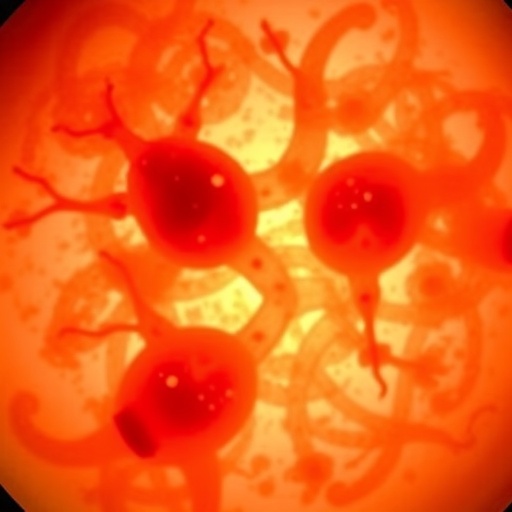In the field of pediatric medicine, rare syndromes often present challenges that require meticulous investigation and understanding. Recently, a case study has emerged highlighting Imerslund-Gräsbeck Syndrome, a condition characterized by various clinical manifestations including proteinuria and anemia. This syndrome, though not commonly encountered, can have significant implications for affected individuals and offers a fascinating glimpse into the complexities of genetic disorders.
Imerslund-Gräsbeck Syndrome, as described in a recent publication by Makrooni et al., is primarily distinguished by its effects on vitamin B12 absorption, leading to hemolytic anemia and proteinuria. The authors detail the clinical journey of a patient from the Middle East who experienced intermittent proteinuria and anemia over a twelve-year period. This case study not only sheds light on the clinical presentation of the syndrome but also emphasizes the importance of genetic screening and personalized treatment approaches in managing such rare conditions.
One of the most striking aspects of the documented case is the prolonged history leading to diagnosis. The patient experienced intermittent proteinuria and anemia for over a decade, highlighting the often insidious nature of this condition. The lengthy diagnostic odyssey underscores the importance of awareness among healthcare providers about this syndrome. An accurate and timely diagnosis can significantly impact the management and quality of life for affected patients.
The findings presented by Makrooni et al. emphasize the necessity for a multidisciplinary approach in diagnosing rare syndromes such as Imerslund-Gräsbeck. Collaboration among geneticists, pediatricians, and nephrologists is critical for comprehensive patient care. The case report advocates for targeted genetic testing that can reveal underlying mutations associated with the syndrome, ultimately guiding therapeutic decisions and monitoring disease progression in affected individuals.
Further complicating the clinical picture, the case report discusses the interplay between genetic factors and environment. As patients with Imerslund-Gräsbeck Syndrome often exhibit variable clinical manifestations, understanding these differences is crucial for tailoring treatment strategies. It opens discussions on the need for increased genetic counseling and informed discussions regarding potential risks and benefits, especially in regions with limited access to advanced healthcare facilities.
In addition to the clinical and genetic dimensions, the proclaimed awareness of the syndrome needs to be addressed more broadly in the medical community. The implications of untreated or misdiagnosed cases can lead to significant morbidity. The contributions of the authors in sharing their insights not only illuminate the pathophysiology of Imerslund-Gräsbeck Syndrome but also catalyze an essential dialogue about the implementation of better screening practices for anemia and chronic kidney issues.
Moreover, advances in biotechnology and genomic medicine present new frontiers in the understanding and management of genetic syndromes. The exploration of novel therapies aimed at improving vitamin B12 absorption and addressing nephrotoxicity associated with the syndrome raises hope for affected individuals. Future research should focus on gene therapy and other innovative approaches that could potentially alter disease trajectories.
As our understanding of Imerslund-Gräsbeck Syndrome deepens through case studies like this, it becomes clearer that early detection and intervention can significantly alter outcomes. Educating healthcare professionals about this syndrome will promote prompt and effective management, reducing the prevalence of chronic complications associated with delayed treatment. Moreover, public awareness campaigns could serve as a catalyst for individuals presenting with unexplained symptoms to seek treatment sooner.
As this research highlights, the ramifications of genetic disorders extend beyond individual patients. Communities affected by rare conditions such as Imerslund-Gräsbeck Syndrome experience ripple effects, including emotional, social, and financial burdens. By fostering a more informed healthcare ecosystem, we can strive towards better outcomes for families grappling with the challenges inherent in these puzzling syndromes.
The case reviewed in the study underlines the need for continuous education and research in the medical community to unravel the mysteries surrounding such syndromes. More data collection and collaborative research initiatives could further elucidate the prevalence and characteristics of Imerslund-Gräsbeck and similar syndromes, ultimately leading to improved diagnostic protocols and therapeutic interventions.
In summary, the comprehensive examination of Imerslund-Gräsbeck Syndrome presented by Makrooni et al. adds an essential piece to the puzzle of pediatric genetic disorders. The findings from this case study highlight the critical importance of awareness, early diagnosis, and tailored treatments for effectively managing such syndromes. This research signals a step forward in advancing pediatric medicine, ensuring that the unique needs of patients are met with diligence and empathy.
As healthcare continues to innovate, it becomes increasingly imperative to integrate genetic findings into clinical practice. The intersection of genetics with pediatrics promises to unveil new avenues for understanding and treating rare disorders, paving the way for a future where every child receives personalized and effective care based on their genetic makeup.
Subject of Research: Imerslund-Gräsbeck Syndrome, Proteinuria, Anemia
Article Title: Imerslund-Gräsbeck syndrome presenting with a 12-year history of intermittent proteinuria and anemia: a case from the Middle East
Article References:
Makrooni, R., Rahimi Darehbagh, R., Karimi, A. et al. Imerslund-Gräsbeck syndrome presenting with a 12-year history of intermittent proteinuria and anemia: a case from the Middle East.
BMC Pediatr 25, 913 (2025). https://doi.org/10.1186/s12887-025-06284-2
Image Credits: AI Generated
DOI: https://doi.org/10.1186/s12887-025-06284-2
Keywords: Imerslund-Gräsbeck Syndrome, Proteinuria, Anemia, Genetic Disorders, Pediatric Medicine, Vitamin B12 Deficiency, Case Study.




